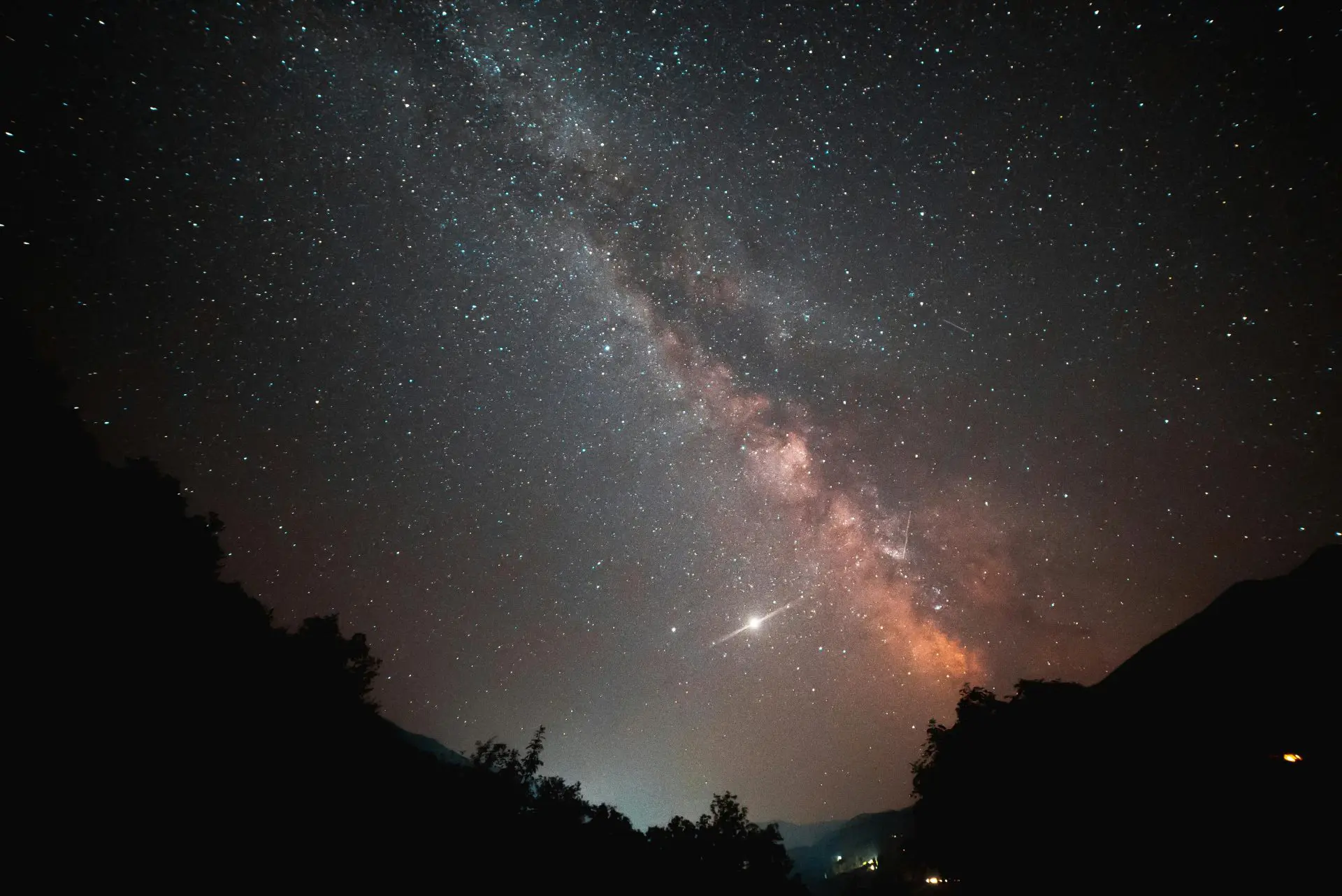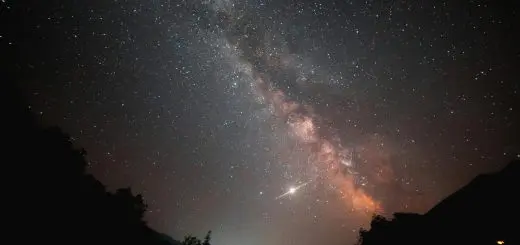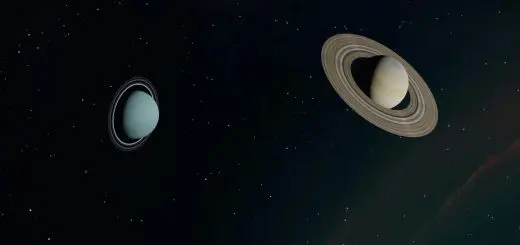Wildlife Art: Inspiring Conservation

Looking for more amazing products? Check out our online store and explore our collection here! Happy shopping!
Before diving in, please note: This post is for informational purposes only. If you’d like to know more about how we approach topics, feel free to check out our friendly Disclaimer Page.
Hey there, amazing readers! 
We’re committed to delivering quality posts, and your support (even just sticking around despite the ads) means everything to us. So, bear with us, and thanks for helping us keep the good vibes rolling. Now, on to the fun stuff!
TRANSLATE BUTTON AT THE END OF THE ARTICLE
A Quick Overview
Wildlife art has long been a powerful medium that inspires conservation efforts around the world.
Artists use their talents to capture the beauty of nature, showcasing the diverse species that inhabit our planet and the delicate ecosystems they rely on.
Through intricate details and creative expression, wildlife art serves as a catalyst for change, motivating action to protect endangered species and their habitats.
This article delves into the role of wildlife art in conservation efforts, how it motivates action, its impact on environmental awareness, and how it can foster appreciation for nature.
The Role of Wildlife Art in Conservation Efforts
Wildlife art plays a crucial role in conservation efforts by raising awareness about the importance of preserving biodiversity.
Through detailed and realistic portrayals of animals and their habitats, artists bring attention to the fragile balance of nature and the threats facing many species.
Artists have the ability to capture the essence of wildlife in their work, showcasing the beauty and complexity of the natural world.
This can inspire people to take action to protect endangered species and their environments, highlighting the need for conservation efforts.
By depicting wildlife in their natural settings, artists can educate the public about the importance of preserving ecosystems and the interconnectedness of all living things.
This knowledge can lead to increased support for conservation initiatives and policies.
Wildlife art also serves as a historical record, documenting species that may be on the brink of extinction.
Through their work, artists can immortalize animals that future generations may never have the chance to see in the wild, creating a sense of urgency to protect these species.
Additionally, wildlife art can serve as a tool for researchers and conservationists to study and monitor wildlife populations.
Artists can provide valuable insights into animal behavior and habitat preferences through their observations and interpretations, contributing to scientific knowledge and conservation strategies.
Through their art, wildlife artists can evoke emotions and connections with nature that can drive individuals to take action.
By highlighting the beauty and vulnerability of wildlife, artists can inspire a sense of stewardship and responsibility towards protecting our natural world.
Wildlife art serves as a bridge between the public and the natural world, allowing people to experience and appreciate the diversity of life on Earth in a tangible and relatable way.
This connection can foster empathy and understanding, leading to increased support for conservation efforts.
Artists have the unique ability to communicate complex scientific concepts and environmental issues through their art in a visually appealing and accessible manner.
This can help bridge the gap between scientific research and public understanding, making conservation initiatives more relatable and engaging.
By showcasing the beauty and diversity of wildlife through their art, artists can inspire people to see nature in a new light and appreciate the intrinsic value of all living beings.
This shift in perspective can lead to a deeper appreciation for the importance of conservation efforts and the need to protect our planet for future generations.
Overall, wildlife art plays a pivotal role in conservation efforts by raising awareness, inspiring action, fostering connections with nature, and promoting a deeper appreciation for the beauty and diversity of the natural world.
Through their creative expressions, artists have the power to transform hearts and minds, driving positive change for wildlife and the environment.
How Wildlife Art Motivates Action for Conservation
Wildlife art has a unique ability to evoke emotions and stir passions, motivating individuals to take action to protect endangered species and their habitats.
Through their art, artists can create a sense of urgency and inspire a desire to make a difference in the world.
The visual impact of wildlife art can be a powerful motivator for conservation action, as it allows people to see the beauty and vulnerability of wildlife up close.
This personal connection can drive individuals to become advocates for conservation and environmental protection.
Artists often use their work to tell compelling stories about wildlife and the challenges they face, highlighting the need for conservation efforts.
By sharing these narratives through their art, artists can inspire empathy and compassion in viewers, driving them to support conservation initiatives.
Wildlife art can also serve as a call to action, prompting individuals to reflect on their own impact on the environment and consider ways they can contribute to conservation efforts.
By showcasing the beauty of nature and the threats facing wildlife, artists can motivate people to make positive changes in their lives.
The creativity and imagination displayed in wildlife art can inspire innovative solutions to conservation challenges.
Artists often approach environmental issues from a fresh perspective, sparking new ideas and approaches to protecting biodiversity and preserving habitats.
Through their art, wildlife artists can highlight success stories in conservation, showcasing the positive impact of efforts to protect endangered species and restore ecosystems.
This optimistic outlook can inspire hope and encourage continued support for conservation initiatives.
Wildlife art can serve as a visual reminder of the importance of preserving biodiversity and the consequences of inaction.
By portraying the beauty of wildlife alongside the threats they face, artists can motivate individuals to take responsibility for protecting the natural world.
Artists often collaborate with conservation organizations to create artwork that raises funds for wildlife protection projects.
By using their art as a tool for fundraising, artists can directly support conservation efforts and make a tangible impact on the ground.
The attention-grabbing nature of wildlife art can draw people into conversations about conservation and environmental issues, sparking meaningful discussions and raising awareness.
By starting these dialogues, artists can inspire collective action and community involvement in conservation initiatives.
Overall, wildlife art serves as a powerful motivator for conservation action by evoking emotions, telling compelling stories, inspiring creativity, showcasing success stories, and raising funds for wildlife protection.
Through their art, artists can ignite a passion for nature and drive positive change for the environment.
Wildlife Art: A Powerful Tool for Advocacy
Wildlife art serves as a powerful tool for advocacy, allowing artists to raise awareness about conservation issues and inspire action to protect wildlife and their habitats.
Through their creative expressions, artists can communicate complex environmental messages in a visually compelling and accessible way.
Artists often use their work to draw attention to the plight of endangered species and the threats facing ecosystems around the world.
By depicting these issues through their art, artists can bring visibility to conservation challenges and inspire individuals to get involved in conservation efforts.
The impact of wildlife art on advocacy can be far-reaching, as it has the ability to engage a wide audience and spark meaningful conversations about environmental stewardship.
By using their art to start conversations, artists can create a platform for raising awareness and promoting positive change.
Wildlife art can serve as a powerful storytelling medium, allowing artists to convey important messages about conservation in a compelling and emotive way.
Through their art, artists can share narratives about wildlife, habitats, and the interconnectedness of all living things, inspiring empathy and understanding in viewers.
Artists often collaborate with conservation organizations and scientists to create artwork that educates the public about environmental issues and promotes conservation initiatives.
By partnering with experts in the field, artists can ensure that their art is accurate, informative, and impactful.
The accessibility of wildlife art makes it an effective tool for advocacy, as it can reach people of all ages and backgrounds.
Through exhibitions, educational programs, and online platforms, artists can share their work with a diverse audience, inspiring individuals to take action for wildlife and the environment.
Wildlife art can also serve as a form of protest, drawing attention to environmental injustices and advocating for change.
Artists have used their work to challenge destructive practices, raise awareness about environmental degradation, and call for greater protection of natural resources.
By showcasing the beauty and diversity of wildlife in their art, artists can inspire a sense of wonder and appreciation for the natural world.
This connection to nature can drive individuals to support conservation efforts and advocate for policies that protect wildlife and their habitats.
Wildlife art can be a catalyst for social change, as it has the power to shift perspectives, inspire action, and mobilize communities around conservation issues.
By harnessing the creative energy of artists, conservation advocates can amplify their message and drive positive change for the environment.
Overall, wildlife art is a powerful tool for advocacy, as it has the ability to raise awareness, inspire action, tell meaningful stories, engage a wide audience, and drive social change.
Through their art, artists can be powerful advocates for wildlife and the environment, using their talents to make a difference in the world.
Connecting People to Nature Through Art
Wildlife art serves as a powerful tool for connecting people to nature, allowing individuals to experience the beauty and diversity of the natural world through artistic expression.
By showcasing wildlife in their art, artists can create a sense of wonder and appreciation for the wonders of the natural world.
Through their creative interpretations of wildlife and habitats, artists can evoke emotions and stir passions, drawing viewers into a deeper connection with nature.
This emotional connection can inspire individuals to seek out opportunities to experience the outdoors and engage with wildlife firsthand.
The accessibility of wildlife art makes it an effective medium for connecting people to nature, as it can reach individuals of all ages and backgrounds.
By showcasing the beauty of wildlife in their art, artists can inspire a sense of curiosity and exploration in viewers, encouraging them to learn more about the natural world.
Wildlife art can also serve as a form of environmental education, teaching viewers about the importance of biodiversity, the threats facing wildlife, and the need for conservation efforts.
Through their art, artists can communicate complex scientific concepts in a visually engaging way, making environmental issues more relatable and accessible.
Artists often use their work to highlight the interconnectedness of all living things and the role that humans play in shaping the natural world.
By showcasing the relationships between wildlife, habitats, and ecosystems, artists can inspire a sense of responsibility and stewardship in viewers, driving them to take action to protect the environment.
Through exhibitions, workshops, and educational programs, artists can engage the public in conversations about conservation and environmental stewardship.
By providing opportunities for people to interact with wildlife art, artists can foster a deeper connection to nature and inspire individuals to get involved in conservation efforts.
Wildlife art can serve as a window into the natural world, allowing individuals to experience the beauty and diversity of wildlife up close.
By showcasing the intricate details and unique characteristics of animals and their habitats, artists can create a sense of intimacy and connection with nature in viewers.
The immersive nature of wildlife art can transport viewers to distant landscapes and exotic habitats, allowing them to experience the wonders of the natural world from the comfort of their own homes.
This virtual connection to nature can inspire a sense of awe and appreciation for the beauty of wildlife and ecosystems.
By showcasing the vulnerability of wildlife and the threats facing many species, artists can evoke empathy and compassion in viewers, driving them to take action to protect the environment.
Through their art, artists can inspire a sense of urgency and responsibility towards preserving biodiversity and natural habitats.
Overall, wildlife art serves as a powerful tool for connecting people to nature, fostering appreciation for the beauty and diversity of the natural world, educating viewers about environmental issues, inspiring action for conservation, and creating a sense of wonder and curiosity about wildlife and habitats.
Inspiring Conservation Through Wildlife Art
Wildlife art serves as a source of inspiration for conservation efforts, motivating individuals to take action to protect endangered species and their habitats.
By showcasing the beauty and diversity of wildlife in their art, artists can evoke emotions and stir passions, driving viewers to support conservation initiatives.
Artists often use their work to tell compelling stories about wildlife and the challenges they face, highlighting the need for conservation efforts.
By sharing these narratives through their art, artists can raise awareness about environmental issues and inspire individuals to get involved in conservation projects.
The visual impact of wildlife art can be a powerful motivator for conservation action, as it allows viewers to see the beauty and vulnerability of wildlife up close.
This personal connection to nature can drive individuals to become advocates for wildlife protection and environmental stewardship.
Through their art, wildlife artists can communicate important messages about the interconnectedness of all living things and the role that humans play in shaping the natural world.
By highlighting these relationships, artists can inspire a sense of responsibility and stewardship in viewers, encouraging them to make positive changes in their lives.
Wildlife art can serve as a catalyst for change, sparking conversations about conservation issues and mobilizing communities around environmental challenges.
By using their art to start these dialogues, artists can create a platform for raising awareness, promoting action, and driving positive change for wildlife and the environment.
Artists often collaborate with conservation organizations and scientists to create artwork that supports wildlife protection projects.
By partnering with experts in the field, artists can ensure that their art is accurate, informative, and impactful, contributing to conservation efforts on a global scale.
Wildlife art can also serve as a form of protest, drawing attention to environmental injustices and advocating for change.
Artists have used their work to challenge destructive practices, raise awareness about environmental degradation, and call for greater protection of natural resources.
By showcasing the beauty and diversity of wildlife in their art, artists can inspire a sense of wonder and appreciation for the natural world.
This connection to nature can drive individuals to support conservation efforts and advocate for policies that protect wildlife and their habitats.
Wildlife art can be a powerful tool for engaging the public in conservation efforts, as it has the ability to reach a wide audience and spark meaningful discussions about environmental stewardship.
By using their art to raise awareness, artists can inspire individuals to take action for wildlife and the environment.
Overall, wildlife art serves as a powerful source of inspiration for conservation, as it has the ability to evoke emotions, tell compelling stories, communicate important messages, spark conversations, and mobilize communities around environmental challenges.
Through their art, artists can inspire positive change for wildlife and the environment, driving towards a more sustainable future for all living beings.
The Impact of Wildlife Art on Environmental Awareness
Wildlife art plays a pivotal role in raising environmental awareness by showcasing the beauty and diversity of wildlife in a visually compelling way.
Through their art, artists can evoke emotions and connections with nature, inspiring viewers to take action to protect the environment.
The intricate details and creative expressions found in wildlife art can capture the essence of wildlife and their habitats, highlighting the fragile balance of nature and the threats facing many species.
This attention to detail can educate viewers about the importance of preserving biodiversity and ecosystems.
By depicting wildlife in their natural settings, artists can bring attention to the interconnectedness of all living things and the role that humans play in shaping the natural world.
This understanding can lead to increased awareness about environmental issues and the need for conservation efforts.
Wildlife art serves as a visual reminder of the consequences of inaction and the urgency of protecting our planet for future generations.
By showcasing the vulnerability of wildlife and the threats they face, artists can inspire viewers to take responsibility for their impact on the environment.
Through their art, wildlife artists can communicate complex scientific concepts and environmental challenges in a visually engaging and accessible manner.
This can help bridge the gap between scientific research and public understanding, making environmental issues more relatable and relatable.
Artists often use their work to tell compelling stories about wildlife, habitats, and the challenges they face, highlighting the need for conservation efforts.
By sharing these narratives through their art, artists can raise awareness about environmental issues and inspire empathy and compassion in viewers.
Wildlife art can serve as a form of environmental education, teaching viewers about the importance of preserving biodiversity, the threats facing wildlife, and the need for conservation efforts.
Through their art, artists can promote a deeper understanding of the interconnectedness of all living things and the impact of human activities on the environment.
The emotive nature of wildlife art can evoke empathy and compassion in viewers, driving them to take action to protect the natural world.
By highlighting the beauty and vulnerability of wildlife, artists can inspire a sense of stewardship and responsibility towards preserving biodiversity and ecosystems.
Through exhibitions, workshops, and educational programs, artists can engage the public in conversations about environmental awareness and conservation.
By providing opportunities for people to interact with wildlife art, artists can foster a deeper connection to nature and inspire individuals to get involved in environmental protection.
Overall, wildlife art has a profound impact on environmental awareness by raising attention, educating viewers, inspiring empathy, communicating important messages, and promoting a deeper understanding of the natural world.
Through their art, artists can drive positive change for the environment, motivating individuals to take action to protect wildlife and ecosystems for future generations.
Preserving Biodiversity Through Artistic Expression
Wildlife art plays a crucial role in preserving biodiversity by showcasing the beauty and diversity of wildlife in a visually compelling way.
Through their art, artists can capture the essence of animals and their habitats, highlighting the fragile balance of nature and the interconnectedness of all living things.
Artists often use their work to raise awareness about the importance of preserving biodiversity and the threats facing many species.
By depicting wildlife in their natural settings, artists can educate viewers about the need for conservation efforts and the role that humans play in shaping the natural world.
The intricate details and creative expressions found in wildlife art can evoke emotions and connections with nature, inspiring viewers to take action to protect endangered species and their environments.
By showcasing the beauty of wildlife, artists can foster a deeper appreciation for the importance of preserving biodiversity, emphasizing the need to safeguard the habitats that sustain these species.
Wildlife art serves not only as a visual celebration of the natural world but also as a poignant reminder of the fragility of ecosystems and the urgent need for conservation efforts.

The Enlightenment Journey is a remarkable collection of writings authored by a distinguished group of experts in the fields of spirituality, new age, and esoteric knowledge.
This anthology features a diverse assembly of well-experienced authors who bring their profound insights and credible perspectives to the forefront.
Each contributor possesses a wealth of knowledge and wisdom, making them authorities in their respective domains.
Together, they offer readers a transformative journey into the realms of spiritual growth, self-discovery, and esoteric enlightenment.
The Enlightenment Journey is a testament to the collective expertise of these luminaries, providing readers with a rich tapestry of ideas and information to illuminate their spiritual path.
Our Diverse Expertise
While our primary focus is on spirituality and esotericism, we are equally passionate about exploring a wide range of other topics and niches 

To ensure we provide the most accurate and valuable insights, we collaborate with trusted experts in their respective domains 
Our blog originally focused on spirituality and metaphysics, but we’ve since expanded to cover a wide range of niches. Don’t worry—we continue to publish a lot of articles on spirituality! Frequently visit our blog to explore our diverse content and stay tuned for more insightful reads.
Hey there, amazing reader! 
Check out our store here and take a peek at some of our featured products below! Thanks for being awesome!











